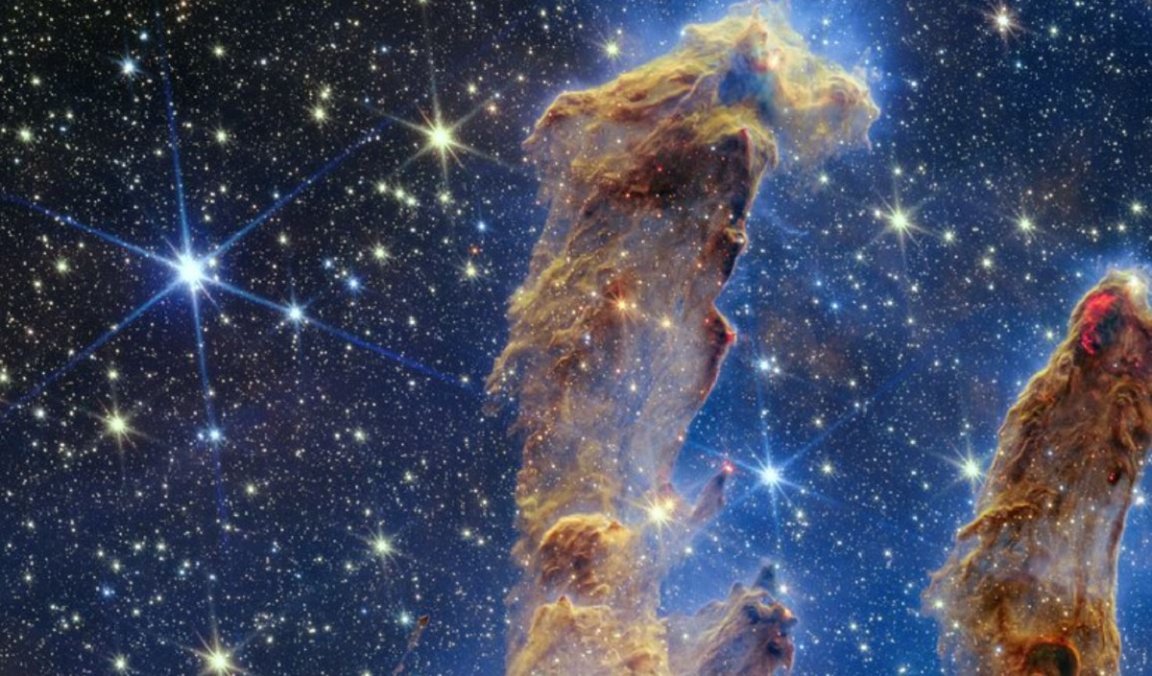
Pointy Perfection
Ever notice something about those images captured by the James Webb Space Telescope — other than the fact that they look absolutely incredible, that is?
If they felt somehow different from other deep space snapshots, you’re not wrong. Like a good movie director, the James Webb knows how to make its stars look spectacular on camera — and it does so with a signature visual trademark: extra diffraction spikes.
To see what we’re talking about, check out this side-by-side comparison of images of the iconic Pillars of Creation, one taken by the Webb and the other by the Hubble Space Telescope (which is still going strong, by the way).
With the Webb image, every star is adorned with eight spikes surrounding its center; six of them large, and two barely visible. The Hubble, meanwhile, only shows four. So what’s the deal?
Bounce Back
These diffraction spikes don’t represent what stars actually look like, but are a visual artifact arising from the telescopes’ internal construction.
Diffraction is a term that describes what happens when waves of light pass by the edge of an object, causing them to bend. In reflecting telescopes like the Webb and Hubble, which feature a secondary mirror suspended in front of the primary one — as seen in this handy NASA infographic — you tend to get a lot of it.
Some diffraction is caused by light bouncing off the main mirror, which on the Webb comprises over a dozen sections. But its most noticeable effects are produced as it hits the secondary one, which is held in place by several struts.
When the light is diffracted again by the struts, some of the waves will overlap in certain regions, either canceling out or getting amplified in luminosity. The spikes are a case of the latter, and their pattern depends on both the shape of the primary mirror, and the arrangement of the struts.
Eight of Hand
Now let’s get to why there’s eight spikes in particular. The James Webb has three struts on its secondary mirror, producing six, smaller spikes.
By design, four of these overlap with the six, much larger spikes produced by the main mirror’s hexagonal pattern. That leaves just two of the secondary spikes visible, for a total of eight that we can actually see.
You only tend to see these diffraction spikes with very bright stars. The light of larger objects that are also shiny — a bright nebula, for example — isn’t concentrated enough to produce this effect.
While they look cool, diffraction spikes aren’t necessarily desirable, since they can blot out other objects. For now, scientists will have to live with them. But future telescopes, like the planned Giant Magellan Telescope in Chile, could have no spikes at all due to its advanced configuration that will ensure that no light is blocked by support struts.
More on space telescopes: James Webb Spots First-Ever Alien “Steam World”